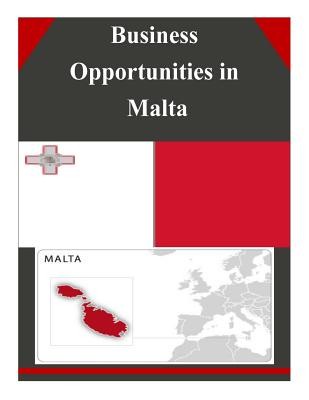
- We will send in 10–14 business days.
- Author: U S Department of Commerce
- Publisher: CreateSpace Independent Publishing Platform
- Year: 2014
- Pages: 78
- ISBN-10: 1502312840
- ISBN-13: 9781502312846
- Format: 21.6 x 28 x 0.4 cm, softcover
- Language: English
- SAVE -10% with code: EXTRA
Reviews
Description
Malta, a member of the European Union since 2004, offers good business and financial services, excellent telecommunications and flight connections, availability of highly skilled personnel, labor costs that are competitive with other western European countries, a sound legal system and a low crime rate. Malta's geographical location, fiscal and other investment incentives, political stability and modern infrastructure make it a natural hub for companies seeking to do business in southern Europe and northern Africa. In its 2006 report, the UN listed Malta as a frontrunner in the high FDI potential category. More than 200 international companies have established operations in Malta. During 2010, the U.S. was Malta's second largest trading partner outside the EU, accounting for 4.91% of total trade. During 2010, The U.S. supplied 2.52% of Malta's total imports and bought 8.85% of Malta's total exports. Trade between Malta and its key trading partners was greatly influenced by the presence of ST Microelectronics in Malta. ST imported substantial amounts of semiconductor materials from and exported significant amounts of finished semiconductors to these countries. Key items Malta imported from the U.S. include: aircraft engines and parts, water purification equipment, parts for electrical power generation, and cereals, mainly for the manufacture of bread. In addition to semiconductors, Malta exported rubber and rubber articles, automotive switches, medical devices and products, toys and games. Malta joined the Eurozone in January 2008. Since May 2005, Malta's currency the Maltese Lira (LM) had been fixed to the Euro at a rate of 2.35 EUR to 1.00 LM under the European Exchange Rate Mechanism II.
EXTRA 10 % discount with code: EXTRA
The promotion ends in 20d.20:46:54
The discount code is valid when purchasing from 10 €. Discounts do not stack.
- Author: U S Department of Commerce
- Publisher: CreateSpace Independent Publishing Platform
- Year: 2014
- Pages: 78
- ISBN-10: 1502312840
- ISBN-13: 9781502312846
- Format: 21.6 x 28 x 0.4 cm, softcover
- Language: English English
Malta, a member of the European Union since 2004, offers good business and financial services, excellent telecommunications and flight connections, availability of highly skilled personnel, labor costs that are competitive with other western European countries, a sound legal system and a low crime rate. Malta's geographical location, fiscal and other investment incentives, political stability and modern infrastructure make it a natural hub for companies seeking to do business in southern Europe and northern Africa. In its 2006 report, the UN listed Malta as a frontrunner in the high FDI potential category. More than 200 international companies have established operations in Malta. During 2010, the U.S. was Malta's second largest trading partner outside the EU, accounting for 4.91% of total trade. During 2010, The U.S. supplied 2.52% of Malta's total imports and bought 8.85% of Malta's total exports. Trade between Malta and its key trading partners was greatly influenced by the presence of ST Microelectronics in Malta. ST imported substantial amounts of semiconductor materials from and exported significant amounts of finished semiconductors to these countries. Key items Malta imported from the U.S. include: aircraft engines and parts, water purification equipment, parts for electrical power generation, and cereals, mainly for the manufacture of bread. In addition to semiconductors, Malta exported rubber and rubber articles, automotive switches, medical devices and products, toys and games. Malta joined the Eurozone in January 2008. Since May 2005, Malta's currency the Maltese Lira (LM) had been fixed to the Euro at a rate of 2.35 EUR to 1.00 LM under the European Exchange Rate Mechanism II.


Reviews